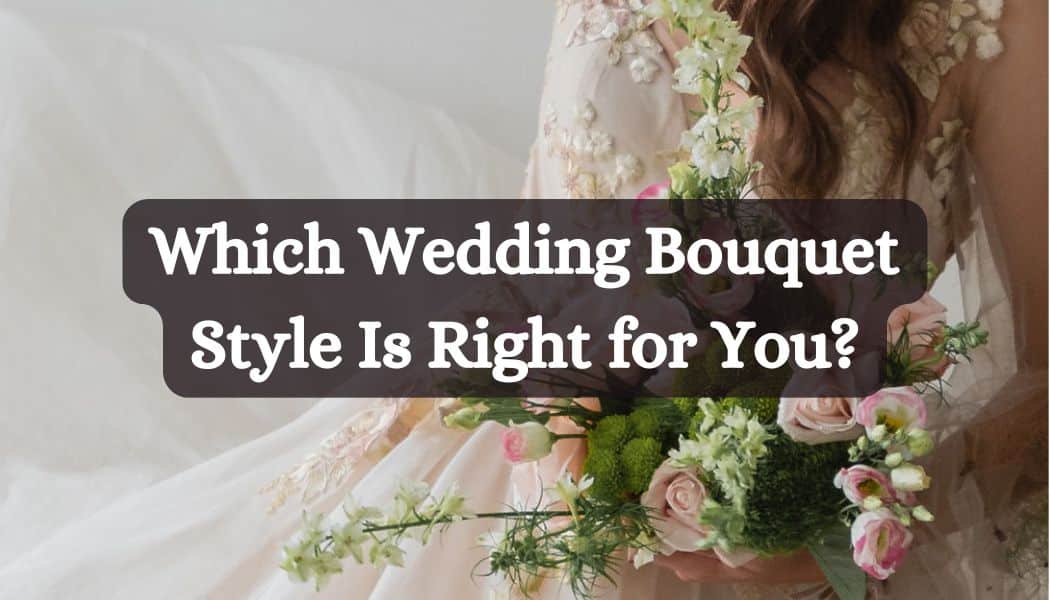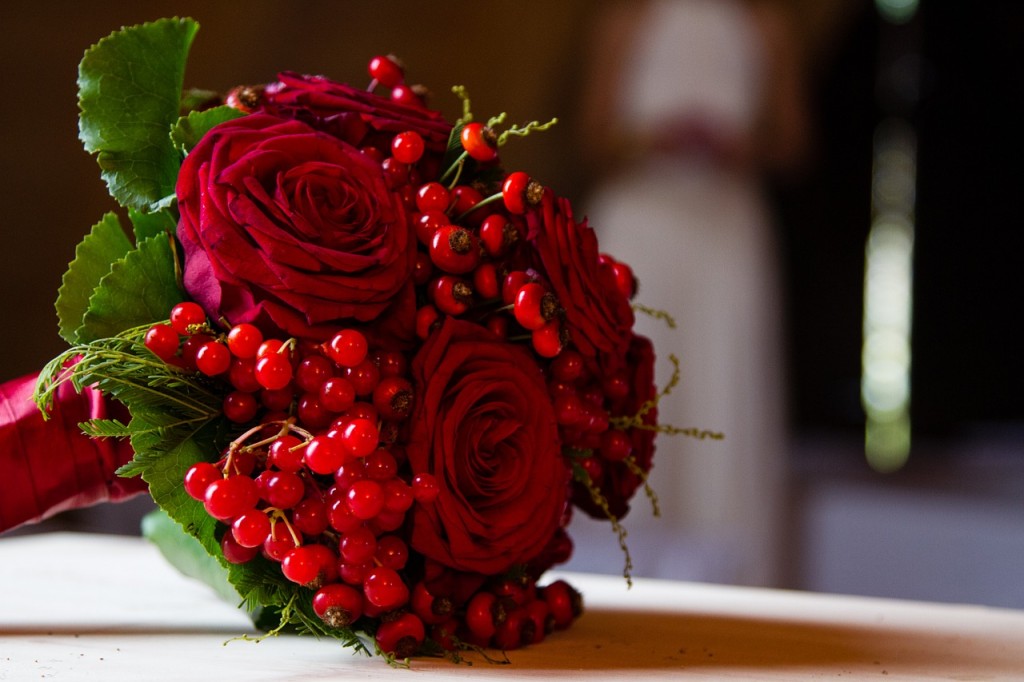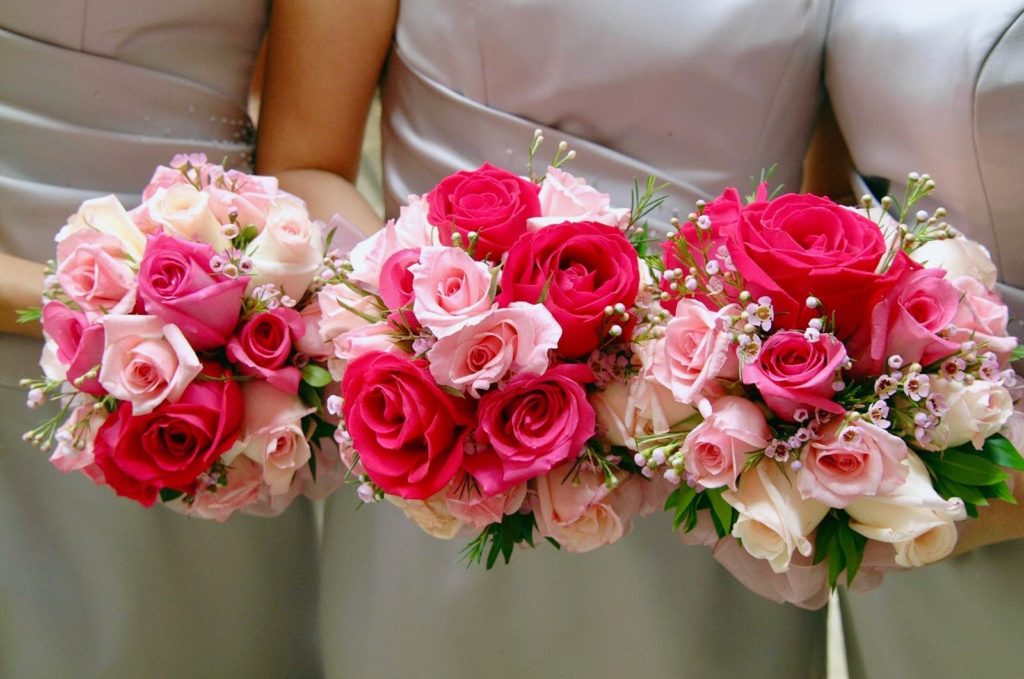
The right bouquet you carry down the aisle should echo your dress, venue, and personal style, without overwhelming your budget. Some brides opt for loose, garden-inspired blooms with flowing ribbons, while others lean into compact clusters with structured stems. Your bouquet can echo the season, the setting, or simply how you want to feel walking down the aisle.
Before heading to your local florist or browsing arrangements at a boutique like the flower shop Chappaqua, take a moment to explore the range of bouquet shapes and styles. Each one has its own energy. From formal cascading silhouettes to sweet hand-tied posies, choosing the right bouquet means thinking about more than color alone. This guide breaks down your options so you can walk into your consultation with clarity and leave with the perfect arrangement in mind.
Table of Contents
Classic Round Bouquets
Round bouquets are timeless for a reason. Their tight, symmetrical shape exudes elegance and works well with traditional weddings. Brides drawn to a more refined, graceful aesthetic often find comfort in the structure of this bouquet. Roses are a popular choice here, but peonies, tulips, or ranunculus can also shine in this setup.
These bouquets look best when color is kept consistent or within a soft gradient. This allows the shape and symmetry to become the star of the show. It’s a strong visual choice for ball gowns or formal wedding attire. The round shape feels intentional and polished in formal photos, which adds to its long-lasting appeal.
Florists love working with this shape because of its balance. For brides seeking a traditional bouquet that feels modern, a round style with contemporary flower choices or greenery can add a fresh touch.
Cascading Bouquets
Dramatic and eye-catching, cascading bouquets feature flowers and greenery that gently flow downward. They evoke a waterfall of blooms that extends from the bride’s hands to her gown. This style suits formal or nature-inspired weddings, and it pairs beautifully with cathedral-length veils and flowing dresses.
Orchids, ivy, amaranthus, and ferns help achieve that cascading effect. These bouquets look natural, but require expert structuring underneath to hold everything in place. They often include a variety of textures and shades for visual interest from every angle.
A cascading bouquet makes a bold statement. It is not ideal for minimalist weddings, but perfect for brides who want their flowers to double as art. If you love a dramatic entrance, this style won’t disappoint.

Hand-Tied Bouquets
Hand-tied bouquets offer a relaxed, organic look. They’re popular for outdoor weddings and events with a more casual or bohemian feel. Instead of a firm structure, these bouquets are gathered and bound with ribbon, twine, or fabric, creating a more natural silhouette.
The freedom in shape allows for mixing flowers of different sizes and textures. Think garden roses, daisies, herbs, and wildflowers. This bouquet type is ideal for brides who want their wedding to feel personal, warm, and a little less scripted.
They also travel well and can be created with a more budget-friendly mix of flowers. If you’re planning a garden, beach, or rustic wedding, a hand-tied bouquet delivers beauty without feeling too formal.
Posy Bouquets
Posy bouquets are compact, charming, and easy to carry. They’re often used for bridesmaids, but can be equally lovely in the hands of a bride looking for simplicity. The round, dome-shaped design works with most flower types and can be tightly bound for a classic look or left looser for a more modern twist.
These bouquets often feature flowers like roses, anemones, and ranunculus. They look great in single-color palettes or as bursts of mixed seasonal blooms. Because they’re smaller, they work well with petite brides or as a complement to more intricate gowns.
If you’re drawn to something sweet, minimal, and unfussy, a posy bouquet is a beautiful choice that still feels special.
Nosegay Bouquets
A cousin of the posy, the nosegay is traditionally smaller and more structured, with more greenery mixed in. These bouquets have roots in Victorian history, where they were worn for their scent as much as their style. Today, they retain their refined air but with modern versatility.
Nosegays often incorporate herbs like rosemary or mint alongside flowers. The stems are tightly wrapped for a clean look. Bridesmaids, flower girls, and mothers of the bride often carry nosegays, but they can also make an elegant statement for a minimalist bride.
This bouquet offers the feeling of tradition with a hint of natural charm. It works well for smaller-scale or city weddings where understated beauty takes the lead.
Pageant Bouquets
Also called presentation bouquets, this style is held along the forearm and has a sleek, horizontal design. Popular with pageant winners and retro Hollywood brides, these bouquets are unique and lend a glamorous edge to your walk down the aisle.
Calla lilies, orchids, or long-stemmed roses often make up the structure. They require careful handling and are best suited for brides comfortable with something a bit unconventional. The bouquet rests across the arm rather than being grasped at the base.
For fashion-forward brides who want something different but elegant, the pageant bouquet offers a confident look that photographs beautifully.
Pomander Bouquets
Pomander bouquets are floral balls suspended from a ribbon and often carried by flower girls or hung as decor. Brides looking to break from tradition might opt to carry one as well. The design is fully round, allowing for 360 degrees of visual interest.
These bouquets are best made with sturdy flowers like carnations or chrysanthemums that can handle the spherical design. They can be monochromatic or colorful depending on the event’s palette.
While they may not suit every dress style, pomanders can be a bold choice for creative brides who want a bouquet that doubles as a statement accessory.
Composite Bouquets
Composite bouquets are crafted from individual petals wired together to form one oversized, single bloom. They’re highly artistic and often created from roses, lilies, or orchids. This design gained popularity in the 1940s and remains an elegant, high-fashion option.
Due to the technical labor involved, composite bouquets are typically more expensive and require a skilled florist. However, the final look is like no other. The visual impact is immediate, and the effect is both graceful and surprising.
If your dress is modern and minimal, a composite bouquet brings in drama without overwhelming your overall look. It’s a choice for brides who appreciate craftsmanship and originality.
Biedermeier Bouquets
This structured bouquet style is made by arranging flowers in concentric circles, often alternating colors or flower types. The result is a bold, layered design that draws the eye inward and feels deliberate.
Biedermeier bouquets are ideal for brides who love symmetry and bold color combinations. Roses, dahlias, and chrysanthemums work well due to their shape and availability in multiple hues. This bouquet pairs best with gowns that have clean lines or geometric detailing.
The effect is both contemporary and historical, which makes it perfect for weddings blending old-world romance with modern flair.
Wildflower Bouquets
Perfect for countryside weddings or outdoor ceremonies, wildflower bouquets bring a free-spirited charm. These bouquets mix seasonal blooms, herbs, and greenery in a way that feels spontaneous and joyful. Their shapes are often loose, asymmetrical, and packed with color and texture.
Wildflower bouquets can include daisies, poppies, lavender, thistles, or Queen Anne’s lace. They reflect the season and location, often tying into the natural environment of the wedding day.
This bouquet feels like walking through a meadow and scooping up armfuls of nature’s best. For brides who want romance without perfection, the wildflower bouquet offers personality in every petal.
Structured Modern Bouquets
For brides who love sleek lines and architectural details, structured modern bouquets offer a contemporary twist. These bouquets are often minimalist in color but bold in form. They may include tropical blooms like anthuriums or birds of paradise, arranged with angular greenery or sculptural elements.
These designs photograph well and work beautifully in urban or modern venues. They play with negative space, often leaving room between stems to highlight shape and structure.
If your dress is avant-garde or your wedding theme leans toward the industrial or artistic, a structured bouquet can elevate the aesthetic.

Seasonal Statement Bouquets
Seasonal bouquets feature blooms that are in peak condition at the time of your wedding. They reflect the tone and feeling of each season. In spring, think tulips and hyacinths. In summer, peonies and garden roses. Fall brings dahlias and sunflowers. Winter offers ranunculus, amaryllis, or evergreens.
The benefit of a seasonal bouquet is freshness and value. Flowers are more readily available and vibrant in their natural cycle. Seasonal arrangements also tie your bouquet to the mood of the event, making your floral choices feel cohesive.
This bouquet suits brides who want to stay connected to the time and place of their celebration. With expert florists, a seasonal bouquet can feel timeless yet rooted in the moment.
Wrapping Up
Choosing the right bouquet style means matching personality, posture, and surroundings. Pick something you can carry with confidence, walk with comfort, and smile for the camera. Your bouquet will carry more than flowers. It will echo your feelings and presence that day, so select the best one that fits you.













